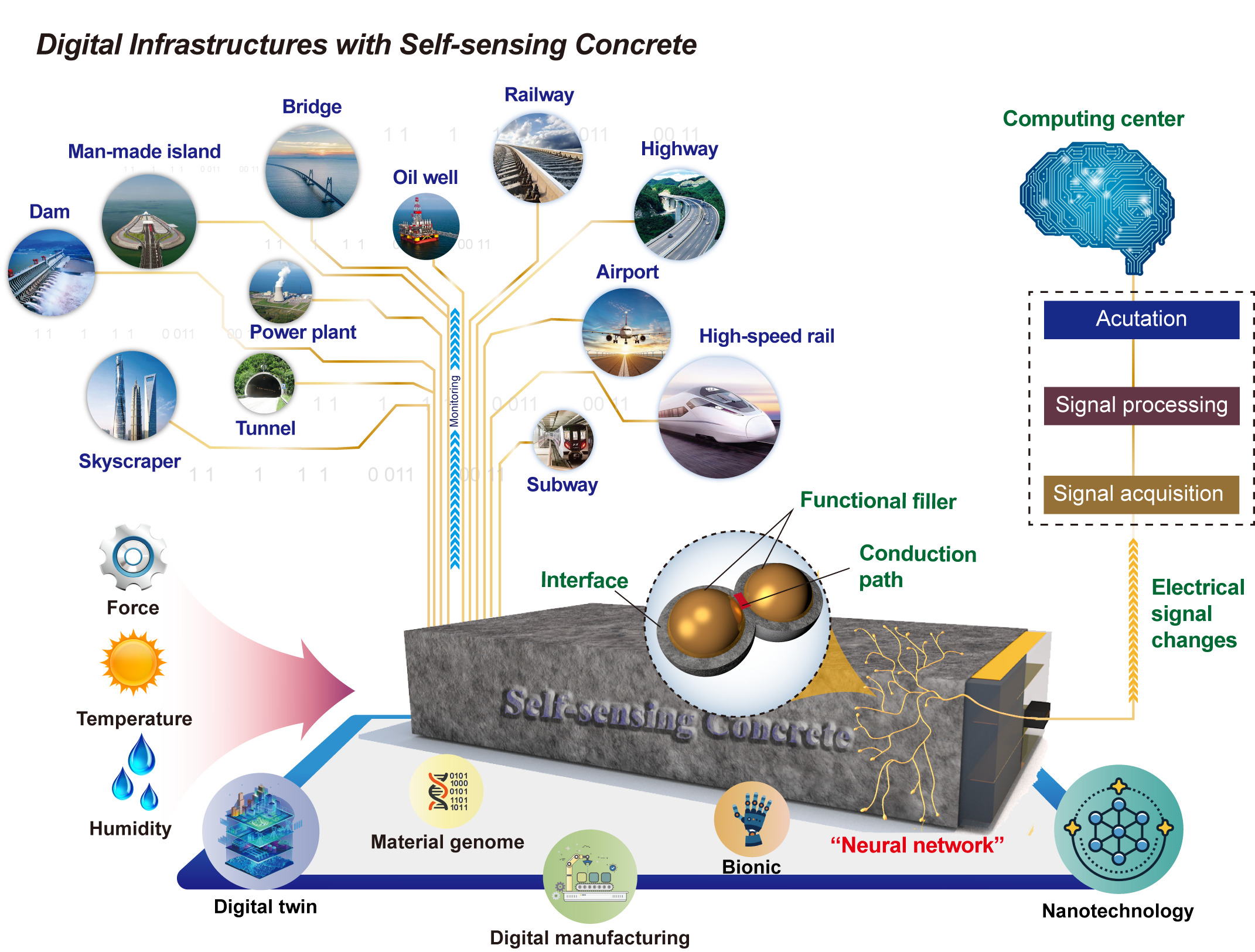MST特刊征稿|自感知混凝土赋能的数字化基础设施的智能监测

特刊详情
客座编辑
- 韩宝国,大连理工大学
- 丁思齐,香港理工大学
- Xun Yu,美国纽约理工学院
- Filippo Ubertini,意大利佩鲁贾大学
主题范围
Potential topics include but are not limited to:
- Innovative design and construction technologies of self-sensing concrete;
- Novel signal characterization, transmission, measurement, and processing method, instrumentation, platform and system of self-sensing concrete;
- Sensing performances of self-sensing concrete under multiphysics;
- Long-term performance of self-sensing concrete under complex serving environments;
- Conductive and sensing mechanisms and models of self-sensing concrete;
- Smart structural elements/structures fabricated with self-sensing concrete;
- Integration of advanced technologies (e.g., nanotechnology, biotechnology, bionic technology, digital twin technology, metamaterials, artificial intelligence technology, material genomics, 3D printing/digital manufacturing) with self-sensing concrete;
- Advanced applications and scale-up implementation strategies of self-sensing concrete.
投稿流程
特刊文章与MST期刊常规文章遵循相同的审稿流程和内容标准,并采用同样的投稿模式。
有关准备文章及投稿的详细信息,可以参阅IOPscience页面的作者指南。
作者可登入期刊主页进行在线投稿,先选择“文章类型”,然后在“选择特刊”的下拉框中选择“Empowering Smart Measurement of Digital Infrastructures with Self-Sensing Concrete”。
投稿截止日期:2024年8月31日。
期刊介绍

- 2022年影响因子:2.4 Citescore:3.9
- Measurement Science and Technology(MST)涵盖整个测量科学和传感器技术的理论、实践和应用,包括:精密测量和计量学;传感器和传感器系统;光学和激光技术;流体;成像;光谱学;材料和材料加工;生物、医学和生命科学;环境和大气;新型仪器系统和组件。MST还出版专题综述和特刊。
